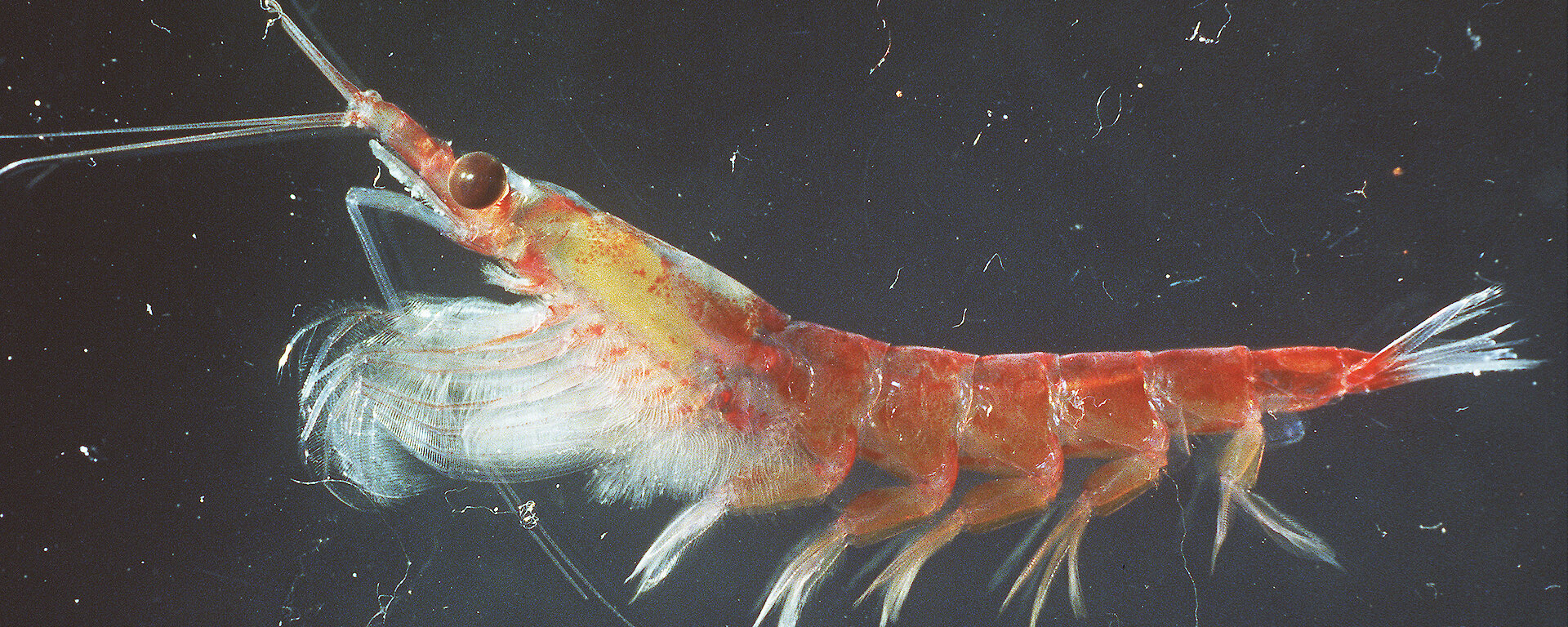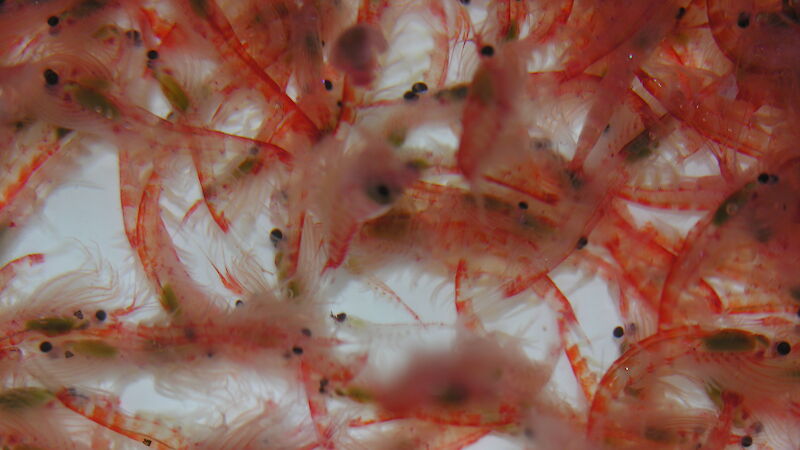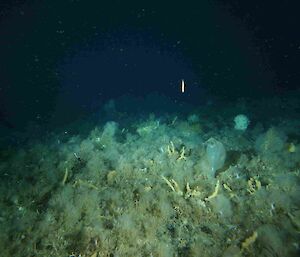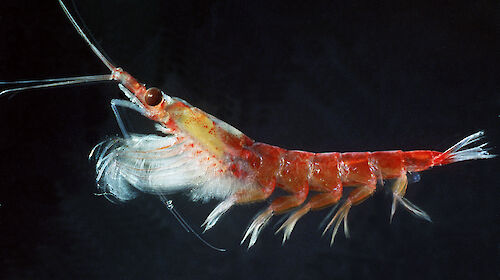Antarctic krill is a species thought to live in the upper ocean, but it has now been shown that a large part of the adult population regularly migrates down to the seabed to feed.
They return with stomachs containing large quantities of iron, a scarce nutrient that helps to promote algal growth in the near-surface waters.
Reporting this week in the Journal Limnology and Oceanography, researchers from the Australian Antarctic Division, The British Antarctic Survey, Southampton University and Oslo University report a startling new role for krill in the Southern Ocean food web.
The textbook picture is that krill are a species of the surface waters. These new findings show that they also migrate regularly down to the seabed to feed on settled detritus.
This detritus diet is also rich in iron – a scarce micro-nutrient that can limit plant growth in approximately 40% of the World Ocean. The huge biomass of krill and their regular commutes between surface and seabed means that krill could help fertilise the anaemic surface waters.
“It was already known that krill can visit the seafloor to feed, even to depths over 3km, but these observations were always treated as exceptions,” said lead author Katrin Schmidt from the British Antarctic Survey.
“What surprised us was how common these seafloor visits were – we found that around 20% of the population could be migrating at any one time.”
The implications are profound. The biomass of krill is similar to that of the human population, so their visits to the seabed mean the exchange of a huge biomass between two fundamentally different food webs.
For example, this exchange is important for the carbon cycle, as krill stomachs contain large quantities of iron after seabed visits. Krill have recently been suggested to be important in the iron cycle, but this role was in recycling iron that was already there in the surface waters.
“Our findings suggest a fundamentally different role in re-supplying the iron that has been lost from the surface layers within settling particles. While recycling is important, it is these re-supply processes that stimulate plant growth and the drawdown of atmospheric carbon dioxide,” Dr Schmidt said.
Australian Antarctic Division krill biologist Steve Nicol said these findings are also significant because it shows krill are found throughout the ocean water column, not just at the surface.
“All estimations of krill distribution and abundance are a result of sampling the top 200 metres of the ocean, either using nets or echosounders,” Dr Steve Nicol said.
“If a large portion of the krill population lives, or migrates to, waters deeper than 200 metres then we have been missing them completely.
“As the krill fishery is the largest in Antarctic waters it is vitally important that we are able to adequately sample the population so that we can set sustainable catch levels and interpret the changes that we see in terms of other features in the environment,” he said.





